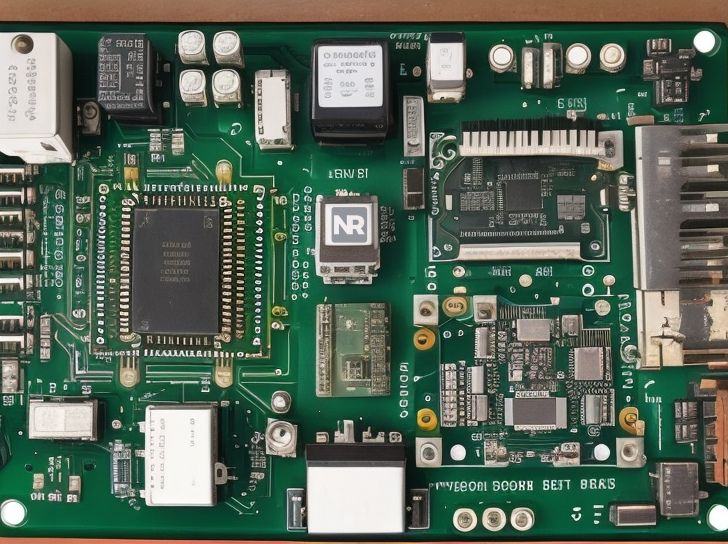
By: Admin
Jan 30, 2024
Circuitry Evolution: Traversing From Breadboards To Integrated Circuits
Within the domain of electronics, the progression from rudimentary breadboards to intricate Integrated Circuits (ICs) stands as a testament to revolutionary innovation. This journey has not only redefined the landscape of circuit design and implementation but has also been instrumental in propelling technological advancements. Embark on a captivating exploration through the milestones marking the evolution of circuitry, tracing the transition from humble breadboards to the sophisticated Integrated Circuits that drive our contemporary devices.
The Genesis of Breadboards: Pioneering Prototyping
In the nascent stages of electronics, prototyping electronic circuits was a formidable task preceding the advent of breadboards. Engineers and enthusiasts grappled with the arduous process of individually soldering each component onto physical boards, rendering modification, and testing laborious endeavors.
Enter the Breadboard Revolution:
The emergence of the breadboard heralded a significant paradigm shift in circuit prototyping. Comprising a grid of interconnected holes, the breadboard facilitated the insertion and connection of components sans the need for soldering. This breakthrough not only expedited the prototyping process but also democratized access for enthusiasts, students, suppliers of electronic components, and professionals alike.
Transitioning to Printed Circuit Boards (PCBs):
The Ascent of PCBs:
While breadboards streamlined circuit prototyping, they fell short for permanent installations. The evolution of circuitry took a pivotal turn with the widespread adoption of Printed Circuit Boards (PCBs). These boards featured copper traces, supplanting manual wiring on breadboards, and offering a more compact and durable solution.
Advantages of PCBs:
Compact Design: PCBs ushered in a new era of compact electronic circuit design, ideal for integration into smaller devices.
Enhanced Reliability: By eliminating loose wires and components, PCBs bolstered the reliability of electronic systems.
Mass Production: The advent of PCBs facilitated the mass production of electronic devices, catalyzing the consumer electronics revolution.
The Emergence of Integrated Circuits (ICs):
The Miniaturization Revolution:
As electronics progressed, the demand for smaller and more efficient components burgeoned. This impetus led to the inception of Integrated Circuits (ICs), a groundbreaking technology that reshaped the electronics landscape.
Key Features of ICs:
Miniaturization: ICs amalgamated multiple electronic components onto a single chip, drastically reducing circuit size.
Enhanced Speed: The compact design of ICs paved the way for shorter interconnection paths, fostering faster signal propagation.
Energy Efficiency: With reduced power consumption, ICs presented a more energy-efficient alternative to conventional circuitry.
The Modern Era: Applications of Integrated Circuits:
ICs Encompassing Everyday Devices:
Integrated Circuits permeate myriad facets of daily life, powering an array of devices integral to modern living:
Consumer Electronics: Serving as the backbone of smartphones, tablets, and smartwatches, ICs enable compact design and high-performance capabilities.
Medical Devices: From pacemakers to diagnostic equipment, ICs underpin advancements in medical technology, facilitating accurate diagnoses and efficient treatment.
Automotive Systems: Modern vehicles rely extensively on ICs for functions like engine control, navigation, and safety features, enhancing overall performance and safety.
Challenges and Future Trends:
Challenges in Miniaturization:
Despite monumental advancements, the evolution of circuitry presents challenges, particularly in miniaturization. As components shrink, issues such as heat dissipation and signal interference loom larger.
Future Trends in Circuitry:
Researchers are exploring novel avenues to address evolving demands in circuitry:
3D Integration: Investigating three-dimensional circuit integration, stacking ICs to reduce footprint and bolster performance.
Quantum Computing: Delving into quantum computing holds promise for revolutionary circuit development, potentially transforming computation paradigms.
Flexible Electronics: The advent of flexible materials opens avenues for flexible ICs, fostering innovative form factors and applications.
Conclusion:
From the rudimentary simplicity of breadboards to the intricacies of Integrated Circuits, the evolution of circuitry in electronics has been a riveting odyssey. Each milestone has unfurled new possibilities, reshaping the design, construction, and interaction with electronic devices. As we stand on the cusp of further technological breakthroughs, the evolution of circuitry continues to shape the future of electronics, promising ever-smaller, faster, and more potent solutions. Embracing these advancements, we eagerly anticipate the innovations that lie ahead in the dynamic realm of electronics.01.
Leave a Comment
LATEST POSTS

Eyeshadow In Spanish: Embrace The Hottest Colors And Techniques

Corporette: Empowering Professional Women

Deciphering The Enigma: Unveiling The Secrets Of Iamnobody89757

The Unforgettable Styles Of Bob Mackie Fashions

0960 What Network? An Inside And Out Examination

Mother's Day In Uae: A Genuine Festival Of Parenthood
